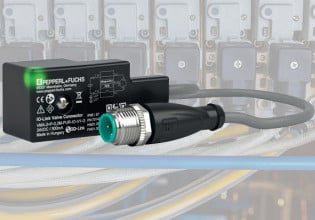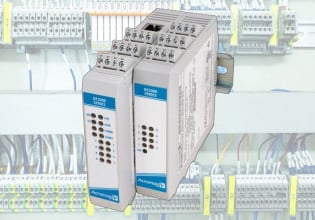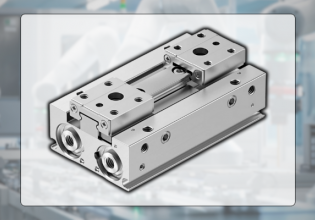How Do Coils Reduce Waste and Increase Sustainability in Thin Sheet Metal?
An interview with Andrea Dallan of Dallan S.P.A. highlights the advantages of using coiled metal instead of sheet metal, as well as improving overall efficiency in manufacturing.
Looking for a way to cut down on waste in the sheet metal industry? Replace the sheets with coils. Virtually any metal that can be made into a sheet can be made into a coil instead. With the proper processing equipment, coiled metal can be used to produce the same parts, often quicker and with less scrap.
Dallan S.P.A.
Dallan S.P.A. specializes in metal coil processing equipment. With over 40 years of experience in the field, they have worked on thousands of metal coil projects, developing solutions for customers in many metalworking industries.

Coiled metal punch. Image used courtesy of Dallan S.P.A.
For the coiled metal industry, some of their most important products include hydraulic and electric punches. These devices feed coiled metal, straighten it before processing, and then punch shaped holes into the metal for various devices.
Control Automation recently had the opportunity to interview Andrea Dallan, CEO of Dallan S.P.A. Andrea is a mechanical engineer by trade and has recently published a book titled, The Revolution of Efficiency.
Coiled Metal vs. Sheet Metal
Sheet metal is everywhere; from automobiles to appliances to roofing material. There is an entire industry filled with “sheet metal workers” who process flat sheets of metal into shapes using brakes, presses, and other tools. What is different about coiled metal? For this comparison, consider thin metal, 0.4 mm to 4 mm thick, that either arrives in standard-sized sheets or a bulk coil.
Because sheet metal comes in standard sizes, products must be designed with these in mind to be efficient. This means limiting the designs to these standard sizes or repeatable fractions of these standard sizes to minimize waste. This limits the solutions available for a given circumstance, or it limits the efficiency, as scrap material will be generated.
Consider a microwave oven housing made from sheet metal. If the standard sheet size is 1 meter wide by 3 meters long, the sheet metal can be cut into a few rectangular sections, say 0.5 meters wide by 1 meter long, making six sections. In the final design, the 1 meter long section could be folded with a brake to make the sides of the microwave oven.
Suppose an engineer wants to make the microwave smaller, requiring a 0.9 meter long by 0.4 meter wide section. This does not divide evenly into the standard size, meaning some of the material is sheared off the side and the end as scrap. This creates an interesting scenario: less metal is going into the microwave oven, but the cost is not decreasing.
Contrast this with coiled metal. The coils will be of several standard sizes in width and thickness, but now the design can be any length, and the cut at the side of the roll, and at one end will generate waste. According to Andrea Dallan, “going from sheet to coils can win an average between 15% and 20% in material savings, but also the production becomes a lot faster.”

CNC hydraulic press brake used in many sheet metal forming applications. Image used courtesy of Nargesa
This comparison is similar to paper towels versus napkins. Sometimes, there is a little spill that doesn’t require an entire napkin, but if that is all that is available, the rest of the napkin is discarded as waste. If a roll of (unperforated) paper towels is available, the messy diner can choose the amount of paper towel required.
Efficiency and Sustainability
As Dallan puts it, “If you work towards the idea of producing more using fewer materials, making better use of your raw materials, you are not only reducing the cost of your production, but you are also buying less raw material; therefore, making your production more sustainable as well, because that raw material doesn't need to be produced in the first place.”

Dallan’s software for line and system control. Image used courtesy of Dallan
It is a win for the manufacturer, as their costs are reduced, and a win for the environment, as there is less material required and less waste generated.
Besides saving on materials cost, Dallan S.P.A. focuses on making the software easier to use for non-programmers. Instead of wading through complex code, there are repeatable patterns that can be extracted and reused in different projects (parametric programming). Ultimately, this saves work hours, meaning engineers can focus on innovating rather than parsing code.
Sustainability, productivity, automation, and flexibility are a few of the topics discussed in The Revolution of Efficiency.






